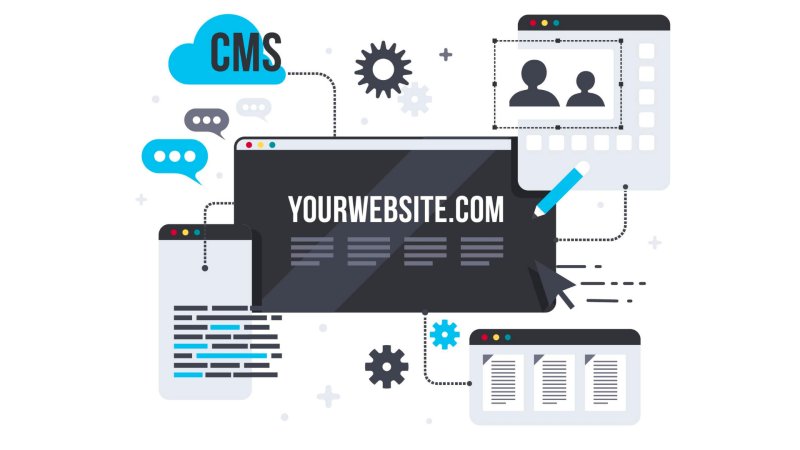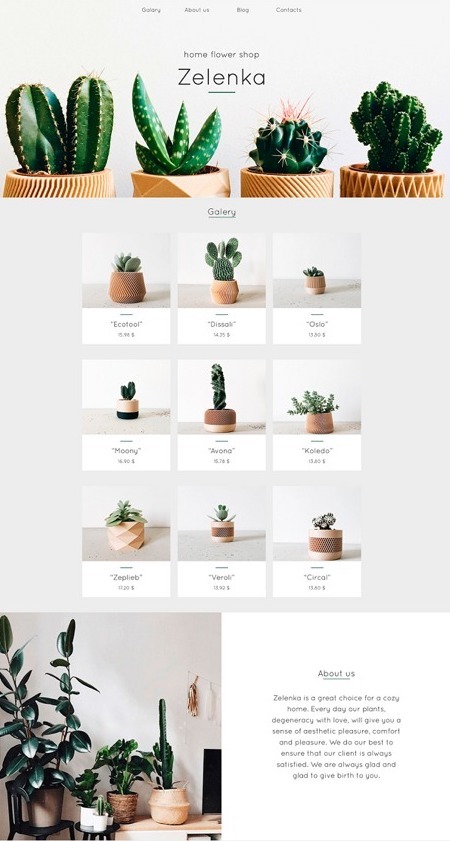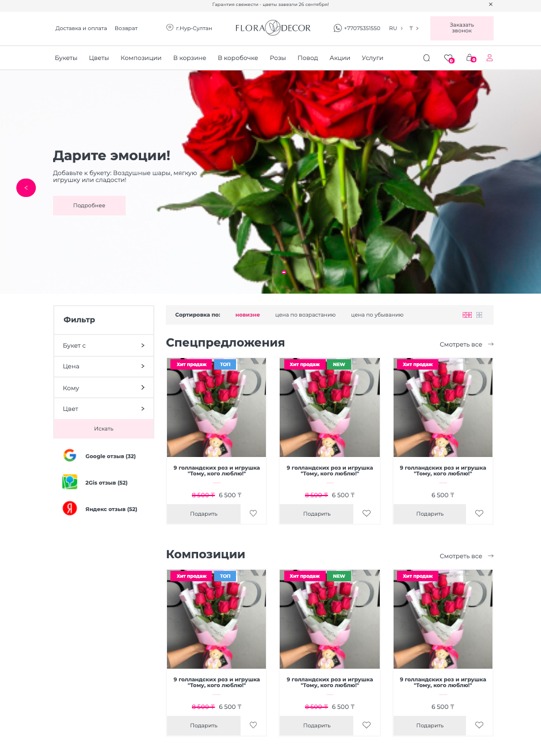
What technologies are available for website development and to whom they are suitable
The site serves as a means of digitalization* and representation of your company in the online space.
*digitalization = automation of business processes.
Let's understand why some websites are cheaper and others more expensive, and what affects the formation of the cost of development.
What is a website and what is its value as a sales tool.
A company website is analogous to an office or headquarters, only online. When you open a real office, you rent space, equip it, make communications, buy equipment and furniture, hire professionals, launch a marketing campaign, order a sign, etc. Everything is very similar online.
Renting a space and fixing it up is domain, hosting and development or tech support solutions.
Hardware and office furniture are the website interface, the advertising campaign is seo/contextual advertising/targeting, and the logo takes the place of the signage.
If you have a startup or small local business, a $100-$500 website can solve your problems. But if you have a regional company, a marketplace, or an international organization, and you're looking to seriously position yourself in the digital space - be prepared to invest time and money into your site.
What decisions of creation of sites exist and how to choose the suitable one. Types of site and purpose.
Landing.
This is a one-page site that contains general information about the company, the benefits of working and contacts for contact. Usually have a simple functionality, which does not require technical modifications in the future. Such sites are not difficult to develop, they can be done even in online designers (Tilda, Wix, LP Generator).

Corporate Website.
A more professional and comprehensive site that represents a company or business on the Internet. This is a multi-page site, which contains more detailed information about the services, their cost, history and contacts of the company.

Online store.
Internet-shop is designed to implement online sales. On such sites it is possible to order a product, book a service and pay for the order online. Often there is a personal account for users, there may be different rights of access to it. And if we are talking about a marketplace, the sellers will also have a personal account.

What solution to choose?
Choosing the right site can be easier than it seems. It all depends on the purpose. First, you need to decide on the purpose, and then with the type of site, structure and functions.
If the main purpose is the sale of goods, then the online store is at your service. If you create a platform to work with a large number of sellers - it is already a marketplace.
A corporate site suits companies that need it to engage users and inform them about company news.
And if you need to present an event or tell about new products online, you can use a landing page.
The cost of creating a website depends largely on the complexity of design and development.
Development technologies.
There are three most popular solutions for creating a website:
- SaaS platforms ( software as a service;
- Development of CMS (content management system) (can be boxed or custom);
- Development on the Framework.
1. SaaS is a way of distributing software on a rental basis. Such systems are leased on a subscription basis. It is enough just to register on the service, which provides the corresponding software and fill in the template with the corresponding information. This development option is suitable for launching new uncomplicated projects or areas in an existing business and testing business hypotheses (banal: "will it take off or will not take off").
The most popular SaaS solutions are UMI, WIX, Shopify, uCoz.
The advantages of creating a website on SaaS platforms:
1) Speed of creation - on such platforms you can create a ready-made solution in a couple of days;
2) The cost of development is much cheaper than development on CMS or Framework, you just need to choose the right package and pay the subscription
3) Such solutions already include everything you need for full-fledged operation of the site - the control panel, hosting, server - all this is done for you by the SaaS provider
Cons:
1) These platforms provide only a template design and do not always have the ability to swap blocks
2) Setting up a project with unique features or fine-tuning of functionality is impossible, you can only use what is provided by the system;
3) Most of these systems are not optimized for high load on the site, they have low rates of performance, fault tolerance and productivity.
2. CMS is a software, in the form of a ready-made website framework, which can be edited and filled with content without special knowledge in programming.
The most popular "conditionally" free CMS are WordPress, Joomla, OpenCart, Drupal. Such management systems can be mastered even with minimal programming skills. Download and install such a system can be installed in a couple of minutes.
But, developing a site based on such a CMS, as well need to take into account and the main disadvantages:
For free CMS the main problem and risk is security. Everyone can master these CMS, and almost everyone who has knowledge in programming can hack it, which causes irreparable harm to the company.
Lack of technical support and documentation, finding the necessary information turns into a whole problem, which complicates the operation and maintenance of the site on this engine.
Access to individual functions and modules are available on a paid basis.
Boxed CMS - a paid "engine" for the site. They also have the same built-in functionality and a set of necessary modules, which can be mastered in a short time. But unlike free CMS, they are more reliable and safe with regard to hacking. For them there is an available and free technical support and documentation. Out-of-the-box CMSs include 1C-Bitrix, NetCat, UMI.CMS, HostCMS.
The advantages of developing on a CMS:
1) Basic features are already provided by the selected CMS.
2) For a standard site it is easy to foresee the result.
3) Already created site structure saves time and budget for development.
As for the cons:
1)Limited functionality within the CMS. Creation of additional functions that are not foreseen, incurs additional costs.
2) It is impossible to remove unused functionality, which can complicate and burden the work of the site.
3) Lack of uniqueness. Anyone can buy the same framework for the site.
4) Custom CMS (custom - made to order, the customer) - is an option to scale when the business does not adjust to the "engine framework" and when you want to implement "atypical" solutions.
5) Custom CMSs make it easier to administer and customize sites built on a framework. These include October CMS, Asgard CMS, PyroCMS.
Such CMS allow to choose a set of functionality and modify it on the fly. Custom solutions can be suitable for both complex projects (large services, social networks, projects with multiple integrations, etc.) and simpler, but non-typical tasks (affiliate programs, affiliate websites management systems).
Most often it happens that complex projects originate at the level of boxed development, but grow out of them as they develop.
3. Framework is a set of libraries that facilitate the development and integration of different modules of the software project. This option is great for companies that implement non-standard trade offers and implement individual business systems. For example, the creation of its own LMS (learning management system) in the project, or the development of child sites, which will be managed from one management system.
The pros of developing websites on the framework:
1) Ability to create and implement all ideas and improvements without restrictions.
2) Allows you to add unique functionality in development
3) Framework allows you to increase the functionality and scale any project with minimal risk
4) Loading and optimization speed of such sites is much faster than developed on CMS
5) It is possible to completely eliminate unused functionality
The cons of sites development on the framework:
1) Development may require a little more time than the development of analogues on boxed CMS. This is due to the fact that the technology involves the creation of client and administrative parts of the site from scratch.
2) Site development on the framework is much more complicated, because it is necessary to involve highly qualified programmers. However, these sites are several heads above their predecessors, because it is worth it.
The more dynamic your business is, the more your site will evolve. The need to keep up with the times also dictates the constant evolution of technology: today your site is comfortable and fast, but tomorrow there may be a new breakthrough in IT and there will be something to strive for again. Based on our experience, we can say that the majority of major projects at least once every 3-5 years update the functionality and design of their website, the industry leaders do it even more often. Do not be afraid to develop your company's website to keep it competitive. Then the website will be the most effective tool for the development of your business.
How to choose the optimal development technology for your project
We figured out what technology exists in the development of the site, and now let's talk about what technology to choose for your project.
Factors to consider when choosing technology development site:
1) Scale and type of project
2) Project complexity
3) The desired speed of development
Often, the type and scale of the project can immediately say what technology is suitable - ready-made solution or development on a framework.
In terms of complexity, a project can be divided into three groups:
Simple (business cards, lending pages, simple applications) - such projects are easy and convenient to implement on SaaS-platforms or CMS. These technologies make simple sites with up to a million users per month.
Medium (complex online stores and Marketplace, large-scale portals, a variety of services, advanced applications) - These solutions are more complex and difficult to implement and are usually made on the framework. framework is used for medium-complexity projects with attendance in the millions.
Complex (huge portals, social networks, innovative and non-typical solutions) - the core of such projects is usually developed in a pure (native) programming language, because pure language allows you to make almost any application, limited only by the capabilities of the programming language itself. All the largest sites in the world with hundreds of millions and billions of users, such as: Instagram, YouTube, Facebook, Amazon, LinkedIn and others are made in pure language.
Projects can also be divided by topic: marketplaces, online stores, social networks, message boards, information sites, etc. For many topics have already developed box solutions and if you are not trying to do something unique or large-scale, you can implement a project on them.
Another important criterion when choosing a technology is the speed of development. Some of the fastest development speed would be PHP, Python and Ruby, and the slowest is Java. Perhaps for this reason for the last decade almost no new mega-projects on Java, but there were a lot of projects on Python and PHP.
When choosing a technology for your project, you need to look ahead. Especially if we're talking about a large-scale project. Technology moves fast and new versions come out every year; frameworks change every 2-3 years, and CMS - every 1-2 years. It's important to anticipate the development of technology to be on trend in a few years. Otherwise, you may need to rewrite the project.
How much does it cost to create a site and what does the development budget depend on?
We have listed below the factors that affect the cost of design.
1. Design
1.1 A unique design allows you to stylize the site taking into account all the features of the business. Such a solution makes it possible to reflect the uniqueness of the brand. But such a design can be expensive.
When choosing a unique design, you need to find a UI / UX designer (User Interface / User Experience, ie, a design, which prioritizes usability).
The cost of design affects the complexity of the project. How many pages of the site is developed, the presence or absence of animation, complex forms and elements and other factors. As a rule, the work of a designer requires from 80 to 400 hours of time, and the cost of website design in Ukraine ranges from $ 1,500 to $ 10,000, depending on the project and the qualifications of the specialist.
1.2 Template - a ready-made solution of the site with a ready set of standard pages. Choosing a template design, you will only need to pick up color combinations, fonts and icons in accordance with the stylistics of the company. This choice is more affordable and faster, but limited within the template. Suitable if you need a quick and easy solution to present your business online.
2. Additional functionality of the site.
The key factor that directly affects the cost of development is the complexity of functionality.
For example:
- Whether the site will be monolingual or multilingual;
- whether there will be integration with external services (CRM, 1C, payment systems, courier delivery services, etc.);
- Complexity of the functional user's personal account;
- The presence or absence of internal SEO optimization work at the development stage;
- configuration and integration of accounting systems, parsers for unloading of goods
3. Expenses for the maintenance of the project.
3.1 Cost of hosting.
Hosting - is an online service that allows you to host and store your website on the server. The cost of hosting at the beginning of 2021 from $ 20.
3.2 Domain costs.
Domain is the online address of your website. Price tag on the domain name starts from $ 5 per year and will depend on the prestige of the domain zone (.com.ua, .com, .ru and others).
Summary:
To summarize, we can say that you choose a website for the goals of your business.
If you are a small local company, you have no logistics, sales departments and you are not looking to expand your business regionally in the next 5 years, you do not necessarily need a unique design and complicated functionality inside your site. In this case, your site will be sufficient for the main pages like "Home", "Services", "Goods" and "Contacts". You can make a website on a boxed CMS or constructors, and this will be enough to present your company on the Internet and to establish the first online sales. But be prepared for the fact that you will not be able to change your site substantially, there will only be a template from which you will not be able to move away.
If you have plans for expansion and development, you understand that the functionality of the site should be able to modify, think through a personal account of the users, the ability to send items to other cities, online payment on the site, promotions and promotion - then it will be productive to immediately consider these goals in the design of the architecture of the future project, and it is better to develop a website on a framework (Laravel, Yii or Synthesis), because you get a flexible and stable solution with lots of features. Which in turn costs more, but creates a strong foundation for the future growth of your company and the development of online sales.